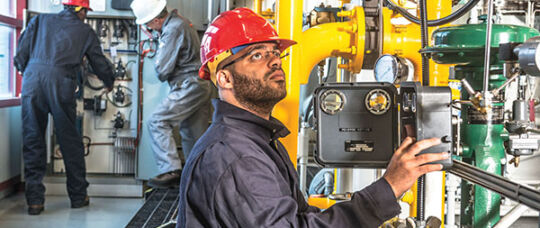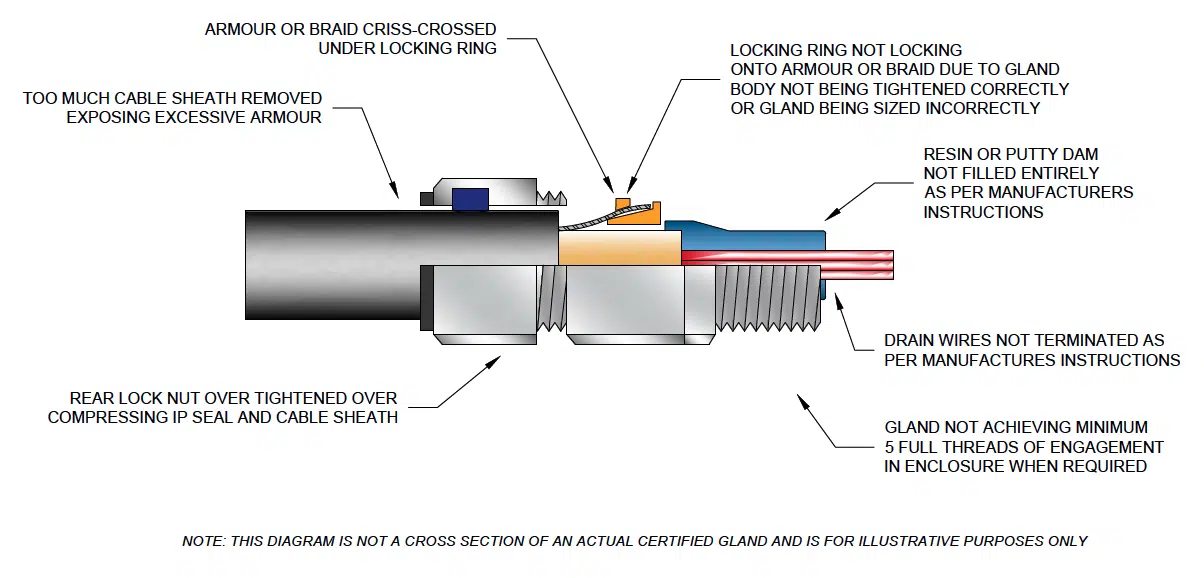The 5-Second Trick For Roar Solutions
The 5-Second Trick For Roar Solutions
Blog Article
The 5-Second Trick For Roar Solutions
Table of ContentsThe Main Principles Of Roar Solutions Roar Solutions Fundamentals ExplainedHow Roar Solutions can Save You Time, Stress, and Money.
In such an ambience a fire or surge is feasible when 3 fundamental problems are satisfied. This is usually described as the "dangerous area" or "burning" triangle. In order to secure setups from a possible surge an approach of evaluating and identifying a potentially harmful location is called for. The function of this is to make sure the correct choice and installment of equipment to inevitably prevent an explosion and to guarantee safety and security of life.
(https://www.bark.com/en/au/company/roar-solutions/Bz3O1R/)
No equipment needs to be mounted where the surface temperature of the equipment is more than the ignition temperature level of the given risk. Below are some usual dust hazardous and their minimal ignition temperature level. Coal Dirt 380C 225C Polythene 420C (melts) Methyl Cellulose 420C 320C Starch 460C 435C Flour 490C 340C Sugar 490C 460C Grain Dust 510C 300C Phenolic Material 530C > 450C Aluminium 590C > 450C PVC 700C > 450C Residue 810C 570C The possibility of the hazard existing in a concentration high sufficient to cause an ignition will certainly vary from place to area.
In order to categorize this threat an installment is divided right into locations of danger depending upon the quantity of time the hazardous is present. These areas are described as Zones. For gases and vapours and dusts and fibres there are 3 zones. Zone 0 Area 20 A hazardous ambience is extremely likely to be existing and may exist for extended periods of time (> 1000 hours per year) or even continuously Zone 1 Area 21 A dangerous environment is possible but not likely to be present for extended periods of time (> 10 450 C [842 F] A category of T6 suggests the minimal ignition temperature level is > 85 C [185 F] Hazardous location electrical tools perhaps designed for usage in greater ambient temperatures. This would certainly suggested on the ranking plate e.g. EExe II C T3 Ta + 60C( This implies at 60C ambient T3 will certainly not be exceeded) T1 T1, T2, T3, T4, T5, T6 T2 T2, T3, T4, T5, T6 T3 T3, T4, T5, T6 T4 T4, T5, T6 T5 T5, T6 T6 T6 A T Course score of T1 means the maximum surface area temperature generated by the instrument at 40 C is 450 C. Thinking the linked T Course and Temperature ranking for the tools are suitable for the location, you can always make use of an instrument with a much more stringent Department score than needed for the location. There isn't a clear response to this question. It really does depend upon the type of tools and what repairs need to be executed. Tools with certain test treatments that can not be done in the field in order to achieve/maintain 3rd event score. Have to return to the factory if it is prior to the devices's service. Field Fixing By Authorised Personnel: Complicated screening might not be called for nevertheless certain treatments may require to be followed in order for the tools to maintain its 3rd party rating. Authorised workers should be employed to carry out the job appropriately Fixing need to be a like for like replacement. New element should be taken into consideration as a direct substitute calling for no unique testing of the equipment after the fixing is full. Each item of devices with an unsafe rating need to be evaluated individually. These are described at a high degree below, but also for more comprehensive details, please refer straight to the standards.
Fascination About Roar Solutions
The devices register is a detailed database of tools records that includes a minimum set of areas to recognize each thing's place, technological specifications, Ex-spouse category, age, and ecological information. This details is crucial for tracking and handling the devices effectively within unsafe locations. In comparison, for regular or RBI sampling assessments, the grade will certainly be a combination of Thorough and Close assessments. The proportion of Thorough to Close inspections will be determined by the Tools Risk, which is examined based upon ignition risk (the possibility of a resource of ignition versus the chance of a flammable environment )and the unsafe location classification
( Area 0, 1, or 2). This variant will also affect the resourcing requirements for work preparation. As soon as Lots are specified, you can develop tasting plans based on the example dimension of each Great deal, which describes the variety of arbitrary equipment products to be examined. To identify the needed sample dimension, two aspects need to be examined: the size of the Great deal and the classification of evaluation, which suggests the level of initiative that ought to be applied( minimized, typical, or increased )to the evaluation of the Lot. By integrating the category of inspection with the Whole lot dimension, you can then develop the ideal denial criteria for an example, suggesting the permitted number of faulty items discovered within that example. For more information on this process, please describe the Power Institute Standards. The IEC 60079 basic suggests that the maximum period between assessments ought to not surpass three years. EEHA assessments will additionally be conducted outside of RBI campaigns as component of scheduled maintenance and tools overhauls or fixings. These evaluations can be attributed towards the RBI sample sizes within the impacted Whole lots. EEHA inspections are performed to determine faults in electric equipment. A weighted racking up system is necessary, as a single piece of devices might have numerous faults, each with differing degrees of ignition threat. If the combined score of both examinations is less than twice the mistake rating, the Lot is regarded appropriate. If the Lot is still thought about inappropriate, it has to undergo a full assessment or reason, which may cause stricter evaluation methods. Accepted Great deal: The sources of any kind of mistakes are identified. If an usual failure mode is found, additional equipment may need maintenance. Faults are identified by intensity( Safety and security, Stability, Housekeeping ), guaranteeing that urgent problems are examined and resolved promptly to alleviate any type of influence on security or procedures. The EEHA data source should track and videotape the lifecycle of faults together with the rehabilitative actions taken. Implementing a robust Risk-Based Inspection( RBI )method is vital for making sure compliance and safety and security in handling Electrical Equipment in Hazardous Locations( EEHA) (eeha certificate). Automated Mistake Scoring and Lifecycle Administration: Effortlessly handle faults and track their lifecycle to enhance evaluation accuracy. The introduction of this assistance for risk-based inspection further enhances Inspectivity's setting as a best-in-class service for governing conformity, along with for any kind of asset-centric assessment use case. If you have an interest in finding out much more, we invite you to request a demo and discover how our service can transform your EEHA administration procedures.
Some Known Factual Statements About Roar Solutions

In regards to eruptive threat, an unsafe location is an atmosphere in which an explosive atmosphere is existing (or might be anticipated to be present) in amounts that need unique safety measures for the building, installation and use equipment. high voltage courses. In this write-up we check out the difficulties encountered in the workplace, the danger control measures, and the needed proficiencies to work securely
These materials can, in certain problems, develop explosive environments and these can have significant and unfortunate effects. Many of us are familiar with the fire triangular remove any kind of one of the three components and the fire can not take place, but what does this mean in the context of hazardous areas?
In many instances, we anchor can do little regarding the degrees of oxygen airborne, yet we can have significant impact on sources of ignition, as an example electrical tools. Hazardous areas are documented on the harmful area classification illustration and are determined on-site by the triangular "EX" sign. Below, amongst other key info, zones are divided into three types depending on the threat, the probability and duration that an explosive atmosphere will exist; Area 0 or 20 is regarded one of the most dangerous and Area 2 or 22 is deemed the least.
Report this page